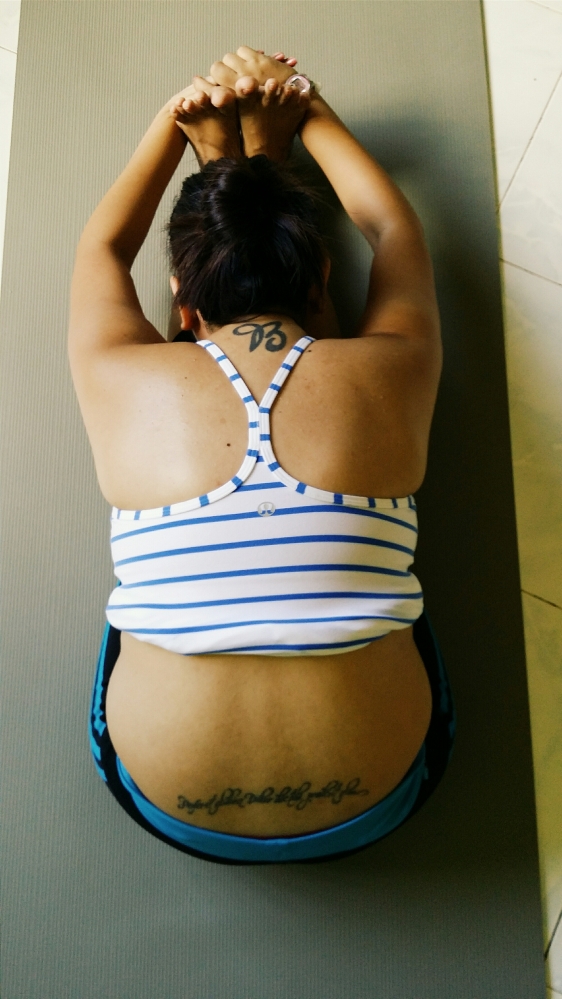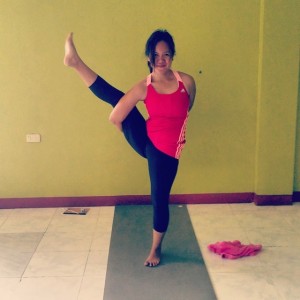If only for a minute. Or ten. Detach yourself from your senses. Enjoy the sense of calm you inevitably feel when you worry about nothing. Close your eyes. Take long, deep breaths. Do away with your emotions. And just let go.
Month: August 2014
What is Yoga? No, really.
yo·gaˈyōgə/nounnoun: yoga
OriginSanskrit, literally ‘union.’
- Yama – deals with ethical standards and focuses on behavior. The five Yama’s are:
- Ahimsa – non-violence
- Satya – truthfulness
- Asteya – non-stealing
- Brahmacharya – continence
- Aparigraha – non-covetousness
- Niyama – has to do with self-discipline and spiritual practices. The five Niyama’s are:
- Saucha – cleanliness
- Samtosa – contentment
- Tapas – asceticism, or severe self-discipline for spiritual growth
- Svadhyaya – study of the scriptures and of one’s self
- Isvara pradnidhana – surrender to God
- Asana – the postures performed to care for and strengthen the body
- Pranayama – control of breath
- Pratyahara – detachment from the senses in order to direct awareness towards the self
- Dharana – concentration of the mind
- Dhyana – meditation or uninterrupted concentration
- Samadhi – a state of ecstasy as a result of a profound connection with the self and the Divine. Samadhi can only be experienced through constantly treading the yogic path
Each of these limbs of yoga warrants its own blog post, and I will exhaust all efforts to comply. But for now, let me conclude the Yoga Sutras by saying what we know about yoga is just the tip of the iceberg. There is so much more to being a Yogi than just being able to hold an inversion or a deep stretch. You may show up on your yoga mat every day, but if you still wear your ego like a badge of honor, then you will still have failed at being a yogi.
Yoga is a way of life. It’s not just a weight-loss program. It’s the whole nine yards. With how I understand it, it’s completely surrendering to something bigger than yourself. It is adhering to the laws of this land in order to coexist with other beings in perfect harmony. It’s being aware of our thoughts, words, and actions at all times to ensure we do not hurt ourselves and others. It’s taking care of our physical being, knowing that the body is the instrument to reach our own divinities. It’s not giving in to temptations of greed and indolence. It’s focusing our mind to achieve our goals. It’s directing our energies into great and positive things.
But of course, these things are easier said than done. I can pour my heart out in detailing how yoga changed my life, but if we are not open to the idea, everything will still seem like utter bullshit. You see, yoga may not be for everyone. Yoga is for the one who has set an intention to become a higher version of him/herself.
There are so many words to define what Yoga is and who the true Yogis are, but in the end, it’s the experience of yoga that truly matters. It is that part of you that you lose when you start to take your practice seriously. You will (hopefully) lose your anger, your arrogance, your ego. It is that lightweight feeling deep in your core that tells you you’ve let go of the negative, unhealthful trivialities in life. It’s knowing that there is something/someone out there that is bigger than yourself, and that everything will be okay. It is being able to laugh at yourself for the times that you have fallen. It is knowing that you will fall again and again, and being okay with it. It is knowing peace. That’s what yoga does to you. And if you’re still not doing yoga, that’s what you’re missing out on.

Yoga for Yolanda – a fundraiser for the benefit of the victims of Typhoon Haiyan in Central Philippines. A true yogi would not think twice about helping a soul in need. Image from the Facebook page of Marichi Yoga House.
* The Yoga Sutras of Patanjali is just one among so many ancient texts about yoga. Modern texts on yoga are even more numerous. It is not my intention to stir a debate on which text is the most accurate. This is a personal blog, not an academic one. *
To Fly or Not To Fly?
How many Yoga asanas are named after birds? Let me name those I know:
- Eagle
- Crow
- Crane
- Peacock
- Swan
- Rooster
- Pigeon
- and my personal favorite, Bird of Paradise
When we see birds flying, we take for granted their grace as they glide across the empty sky. What we fail to see is the constant, tiring flapping of their wings when they tread against the gust of wind. We don’t hear them complain about the struggles of flying. And when we see them at rest, they proudly hold their heads up and chests out (unless they’re eating, which is the only time we see them bow down), as if they had not just flown 50 kilometers in the vastness of the sky.
So many of us (myself included) want to be (or at least experience being) free as birds in flight, thinking only of the grace and sophistication of these tireless creatures. We never consider the consequences of being free. Then again, we only want things we think are somehow beneficial. When we truly want something, do we let the negative side effects bother us during the time we struggle to attain it? I guess not. It’s human nature to only want to see the good things. That is why 80% of the time, we plan only positive outcomes. We fail to consider contingencies, especially when it’s only for the mundane occurrences of life like moving across the country for college, or accepting a job half-heartedly, or learning a craft just for the heck of it.
See, unlike birds, most of us humans don’t have clear intentions to justify our actions. We have our selfish, temporary reasons. And when the time comes for us to analyze why we truly want what we want, we cannot give a definitive response, even to ourselves. See, when birds fly south for the winter, they have a reason: SURVIVAL. Humans are more complicated. We are already surviving, yet we want something more. The sad part is, most of the time, we do not know what we want exactly. We just know we want more.
Looking at my life, I guess I already have my little piece of paradise. I have a solid support system in the form of a loving family and a small but reliable set of friends. I have no material need that remains unfulfilled. And I am walking forward with the life I choose. Truly, I have no more wants – except to flap my wings.




